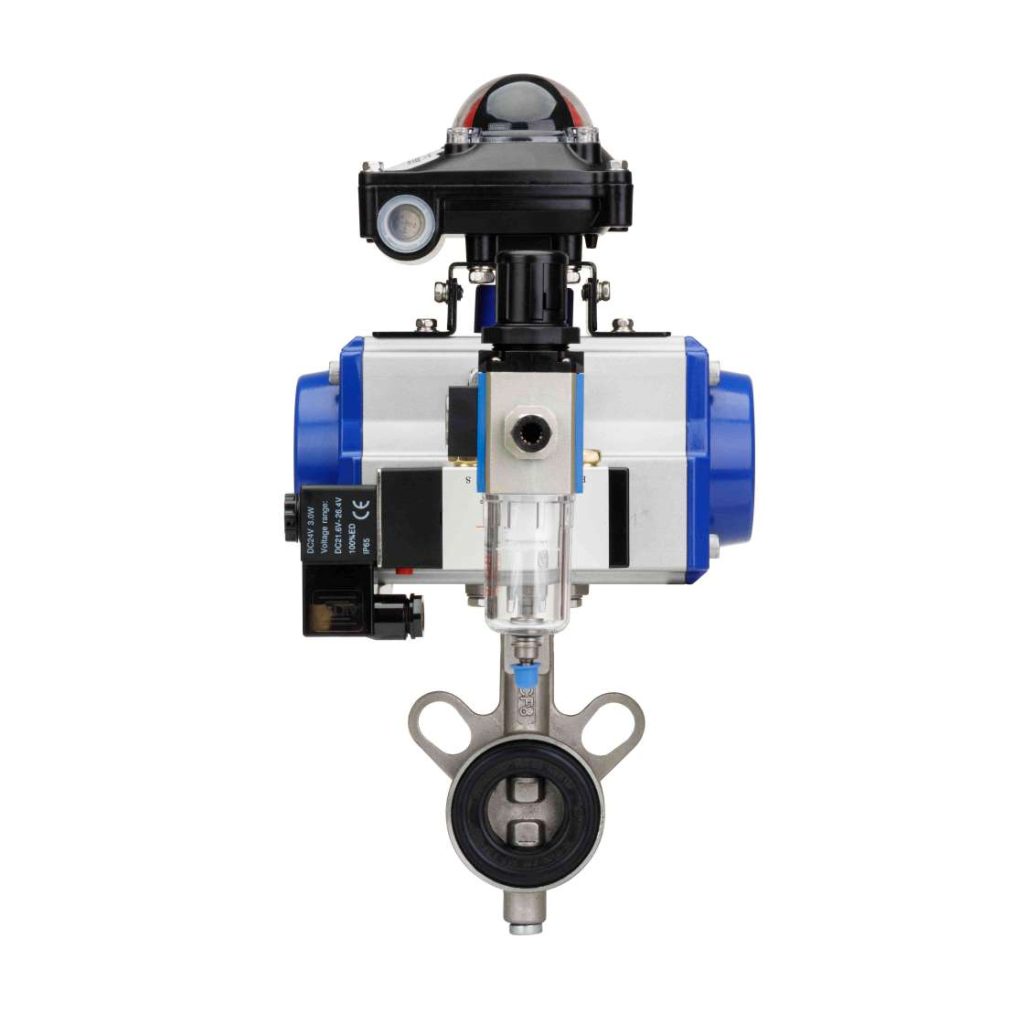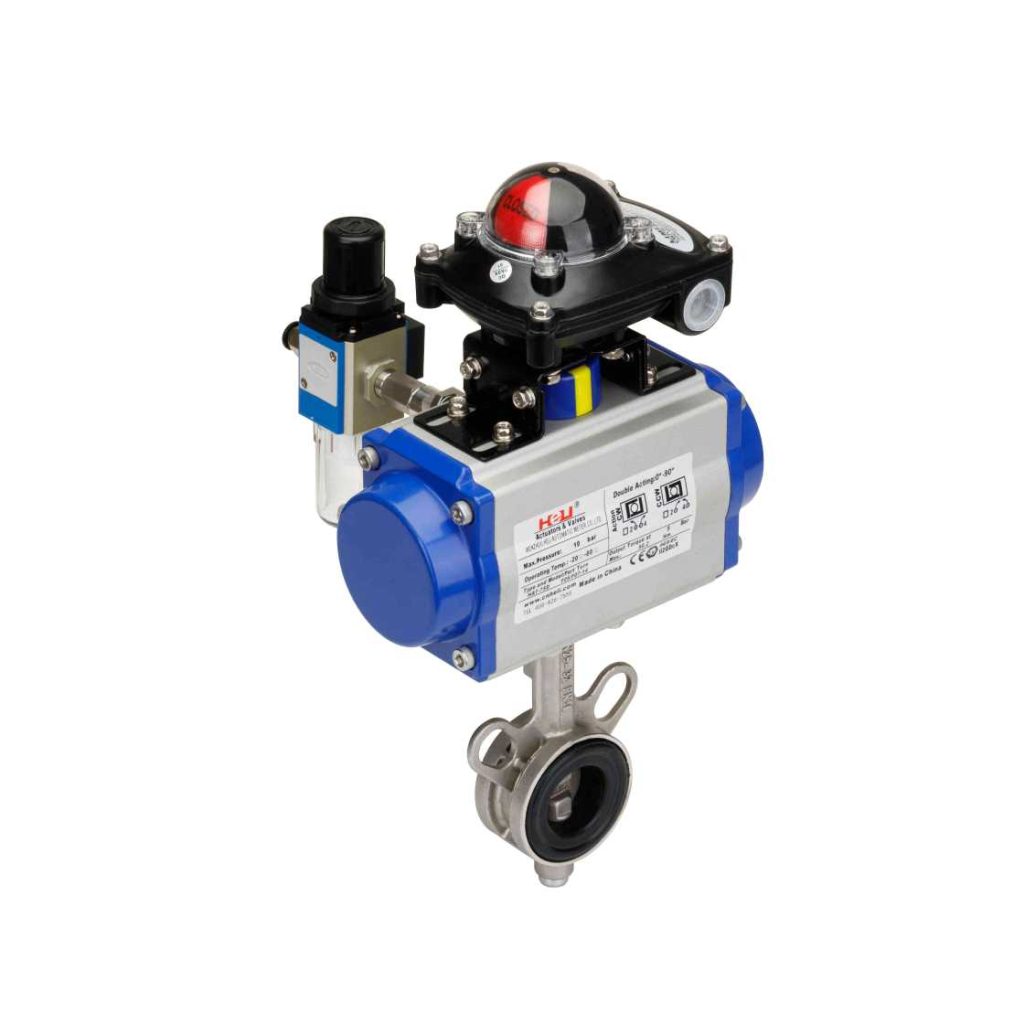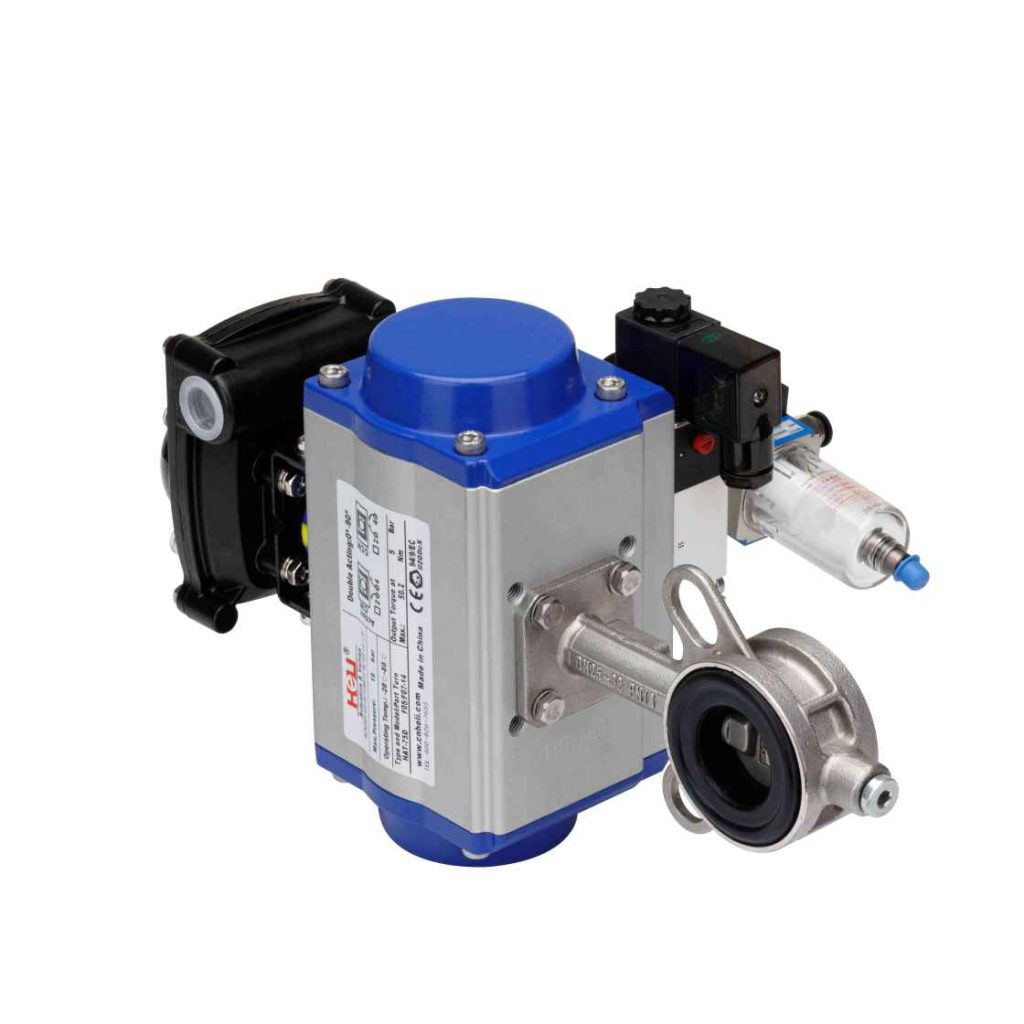The stainless steel pneumatic butterfly valve is an essential component widely used in various industries for regulating the flow of fluids or gases. Known for its durability, efficiency, and ease of operation, this valve combines the robustness of stainless steel with the power of pneumatic control systems, making it a popular choice in demanding environments. This article will explore the structure, advantages, and applications of stainless steel pneumatic butterfly valves, shedding light on why they are a preferred solution for many fluid and gas control systems.

What is a Stainless Steel Pneumatic Butterfly Valve?

A stainless steel pneumatic butterfly valve consists of a circular disc that rotates around an axis to control the flow of fluid. The valve body is made from stainless steel, which provides excellent resistance to corrosion, making it suitable for harsh environments. The “pneumatic” aspect refers to the actuator, which uses compressed air to move the valve disc. This type of actuator offers several advantages, including quick response time, high torque output, and the ability to operate without an external power source. The key components of a pneumatic butterfly valve include the valve body, the disc, the stem, and the actuator. The valve’s disc is mounted on the stem, and when air is supplied to the actuator, it rotates the disc, either opening or closing the valve to regulate flow. The stainless steel construction ensures that the valve can handle high pressures, temperatures, and aggressive media while maintaining long-lasting performance.
